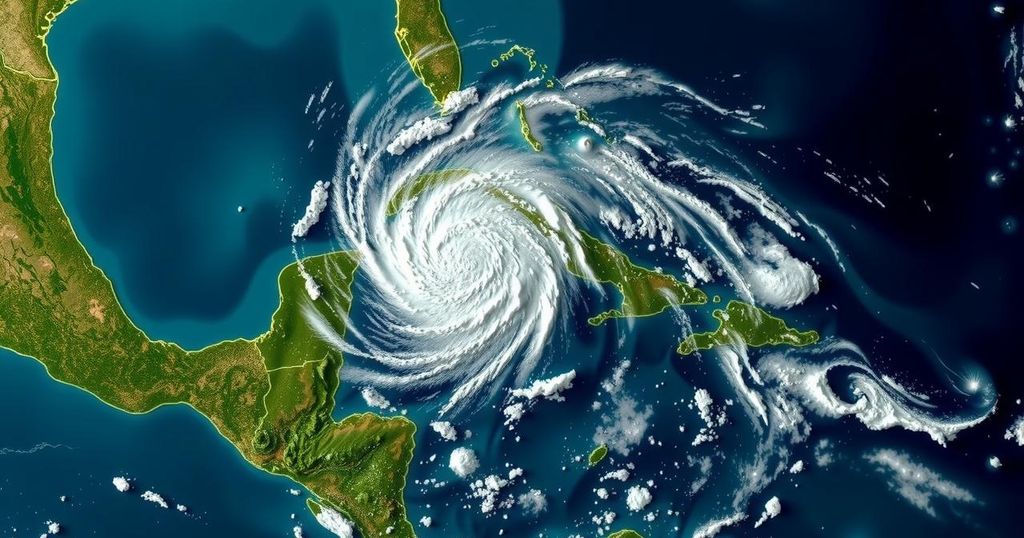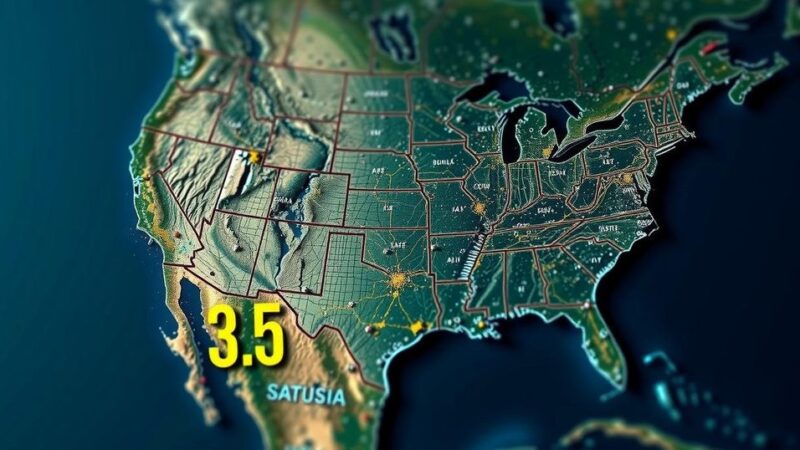Hurricane Rafael, now a Category 2 storm, is expected to weaken as it moves west across the Gulf of Mexico, potentially downgrading to a tropical storm by Sunday. After impacting Cuba, Rafael poses risks of dangerous surf and rip currents, even as warnings for the Dry Tortugas are lifted.
Hurricane Rafael, currently classified as a Category 2 storm, is projected to gradually move westward across the Gulf of Mexico over the coming days. This trajectory presents a less favorable environment for the storm, characterized by significant wind shear, drier atmospheric conditions, and cooler ocean waters, all of which may contribute to a reduction in the storm’s strength. The National Hurricane Center anticipates that as Rafael approaches Mexico by Sunday, it may downgrade to a tropical storm. As of Thursday morning, a tropical storm warning that had been in effect for the Dry Tortugas has been lifted, with no current warnings or watches active. Nevertheless, forecasters caution that the storm could produce hazardous surf and rip current conditions throughout the Gulf, posing life-threatening risks to coastal activities. Wednesday saw Rafael make landfall in western Cuba as a Category 3 hurricane, further exacerbating the ongoing challenges faced by the island’s already strained electrical infrastructure. In the preceding month, Hurricane Oscar had similarly troubled the eastern region of Cuba, resulting in multiple fatalities and extensive property damage. In an additional development, the hurricane center has downplayed the likelihood of a new tropical disturbance forming in the vicinity of Puerto Rico and Haiti, assigning it a mere 20% chance of evolving into a tropical depression over the next week.
The dynamics of Hurricane Rafael are notably influenced by the meteorological conditions it encounters over the Gulf of Mexico and the Caribbean region. Hurricanes thrive in warm waters and moist air, and changes in these elements can significantly impact their strength and behavior. The recent history of storms affecting Cuba underscores the vulnerabilities of the island’s infrastructure and environment. October has proven to be a particularly tumultuous month for Cuba, with recent storms generating severe humanitarian and infrastructural challenges.
In summary, Hurricane Rafael is navigating potentially weakening conditions as it moves across the Gulf of Mexico, with expectations for it to transition into a tropical storm by the time it approaches Mexico. The storm has already inflicted significant damage in Cuba, highlighting the ongoing struggles the nation faces amid severe weather events. Forecasters remain vigilant regarding surf conditions arising from the storm across the Gulf, ensuring public awareness and safety.
Original Source: www.miamiherald.com






